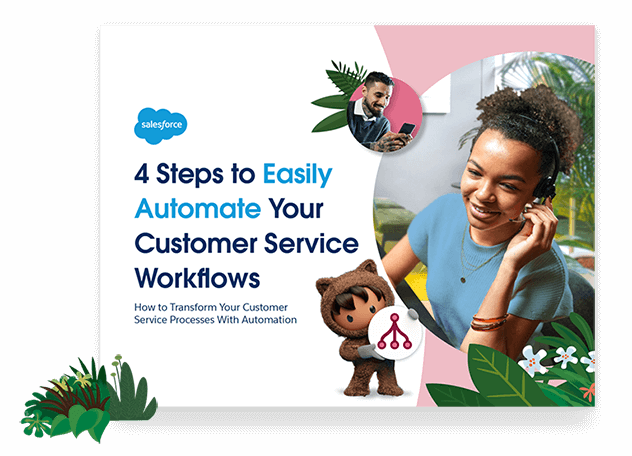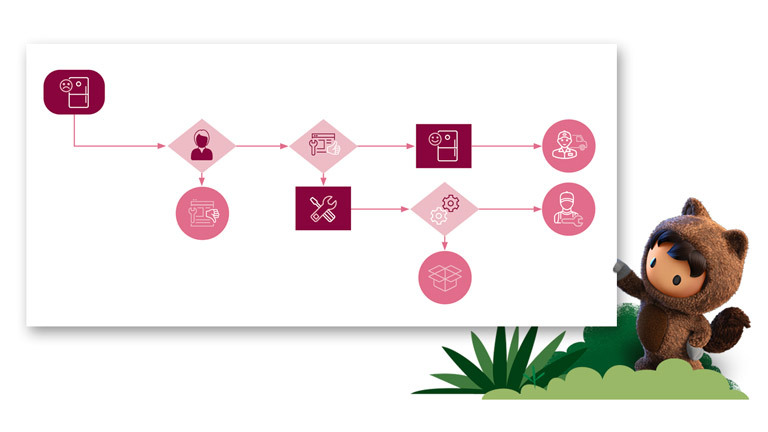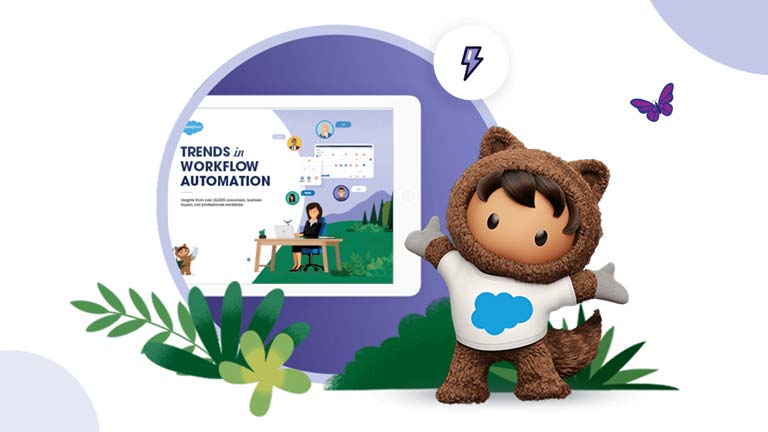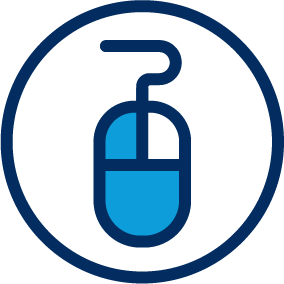Customer Service Workflow Automation - What You Need to Know
How to plan, build, and refine workflow automation and the technology you need to do it
September 2021 | Time to read: 6 minutes
Customer service isn’t just the job of the service team. It takes the whole company. But putting the customer at the center is easier said than done when multiple departments, systems, and channels are involved.
This is where automation comes in to help. People’s interactions with your company are, at their core, a series of processes. And each process includes a series of steps — a workflow. Automation reduces the repetitive and manual steps in a workflow, and connects workflows across departments to deliver successful resolutions of issues and excellent customer experiences.
We recently launched “4 Steps to Easily Automate Your Customer Service Workflows” to explain how to use automation to support faster, more streamlined, and more human-centric customer service. Here’s what every service leader needs to know to get started with customer service automation.
Answer your most pressing questions about automating customer service workflows, including:

Start Your Customer Service Automation Process With These 5 Questions

Before You Automate, Create a Customer Service Process Map – Here’s How

You’ve Automated Your Customer Service Process – What’s Next?
Ready to automate your customer service workflows?
Follow our step-by-step guide to:
- Decide which workflows to automate first
- Create a customer service process map
- Test, measure, and refine your automated processes


Why is automation important to customer service?
Automation simplifies complicated processes, improves the customer experience, and helps your people do what they do best — provide amazing service. According to Salesforce’s Trends in Workflow Automation report, 95% of information technology and engineering leaders said workflow automation is a priority for their organizations, and 71% of service decision makers are accelerating automation initiatives.
Why? As routine, repetitive tasks shift from human to machine, service is streamlined. Employees have more time for strategic work. In fact, 74% of IT leaders who have implemented automation saved at least four hours per week, according to IT Leaders Fueling Productivity With Process Automation, a Salesforce and Pulse report. Your entire organization can mobilize faster to deliver proactive and empathetic customer service. The result is happier humans — customers and employees — and better business outcomes.
What Leaders Say About Automation for Customer Service
95%
of IT and engineering leaders prioritize workflow automation
71%
of service decision makers are accelerating automation initiatives
73%
of IT leaders who have implemented automation report time savings of at least four hours per 40-hour week
How do I decide which customer service processes to automate?
Your process for automating customer service can build over time. You don’t need to tackle everything at once. Instead, you can automate a few steps that are causing the most headaches for your team to manage manually.
Start by looking at a process that involves multiple teams and steps. Which steps are the most repetitive? How much time are your service agents spending on this process? Are there costs you’re losing because of inefficiencies? If you automate this process, or part of the process, will it help to move the needle on your goals, like customer satisfaction (CSAT) or employee experience? Any process that is frustrating your employees or customers is a prime candidate for automation — and a great place to start!

How do I map out which customer service workflows to automate?
“You really have to think about what the end goal is. Mapping a process requires thinking through every component and multiple departments or teams to make sure that it’s all very well connected. That’s the foundation that needs to be laid.”

Chief Customer Contact Officer, SmileDirectClub
How do I improve my customer service automation workflows?
Too often, automation efforts fall short because organizations don’t give enough attention to getting everyone on board. Avoid this mistake by testing your automated workflows and asking for feedback. Do people understand how to use the automated workflow? Does it work as planned? What was their experience? When you get buy-in early, it drives adoption.
Once you test, then measure any improvements to your customer service. Did you reduce the time it took to complete the process? By how much? Did it lead to a better employee experience? Possibly cost savings? If automation improved any of those metrics, congratulations! Communicate those results broadly. If you didn’t see the improvements you hoped for, you can always go back and investigate where to make adjustments.
What technology do I need to make workflow automation successful?
“OneUnited has been in the business of workforce optimization and business process optimization for years. We’ve been very effective at leveraging Salesforce’s low-code or no-code environment to automate workflows across many departments in the organization.”

President and Chief Operating Officer, OneUnited Bank
Start automating your customer service workflows
Workflow automation puts your service operation on the path to a more efficient, flexible future. With automated customer service workflows, you can deliver the customer and employee experience that people want and expect today.
About the Author

CEO of Service Cloud, Salesforce
More Resources

Agility Behind the Scenes is the Key to Igniting the Transformative Customer Experience

Trends in Workflow Automation








